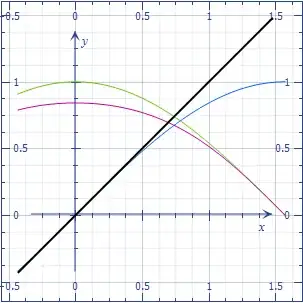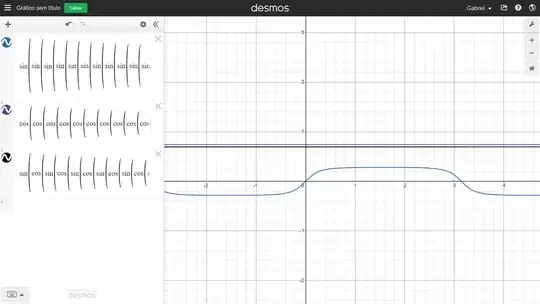By the fixed-point theorem, when an iteration like
$$x_{n+1}=f(x_n)$$ converges, it converges to a solution of $f(x)=x$.
Here is a plot of your $f$'s, which confirm the values you found:

A convergence criterion is $|f'(x)|<1$, which is achieved by your last two functions. Convergence is linear (the number of exact digits grows proportionally to the $n$).
The case of the sine is a little more difficult. But as $|\sin(x)|<|x|$, convergence to $0$ is guaranteed.
If we assume $\sin^{(n)}(x)\sim cn^\alpha$, we have
$$\sin^{(n+1)}(x)=\sin^{(n)}(x)-\frac{(\sin^{(n)}(x))^3}6+o((\sin^{(n)}(x))^3)$$
corresponding to
$$c(n+1)^\alpha\sim cn^\alpha-\frac c6n^{3\alpha},$$ which gives $\alpha=-\frac12$ by identifying the second terms, and
$$\sin^{(n)}(x)\sim\frac c{\sqrt n}.$$
This convergence is extremely slow.
As you probably already figured out, the iterations of $\cos(\sin(\cos(\sin(\cdots))))$ will converge to the value of $\cos(x)$ where $x$ is the limit of $\sin(\cos(\sin(\cos(\cdots))))$.

